- News
- Reviews
- Bikes
- Components
- Bar tape & grips
- Bottom brackets
- Brake & gear cables
- Brake & STI levers
- Brake pads & spares
- Brakes
- Cassettes & freewheels
- Chains
- Chainsets & chainrings
- Derailleurs - front
- Derailleurs - rear
- Forks
- Gear levers & shifters
- Groupsets
- Handlebars & extensions
- Headsets
- Hubs
- Inner tubes
- Pedals
- Quick releases & skewers
- Saddles
- Seatposts
- Stems
- Wheels
- Tyres
- Tubeless valves
- Accessories
- Accessories - misc
- Computer mounts
- Bags
- Bar ends
- Bike bags & cases
- Bottle cages
- Bottles
- Cameras
- Car racks
- Child seats
- Computers
- Glasses
- GPS units
- Helmets
- Lights - front
- Lights - rear
- Lights - sets
- Locks
- Mirrors
- Mudguards
- Racks
- Pumps & CO2 inflators
- Puncture kits
- Reflectives
- Smart watches
- Stands and racks
- Trailers
- Clothing
- Health, fitness and nutrition
- Tools and workshop
- Miscellaneous
- Buyers Guides
- Features
- Forum
- Recommends
- Podcast
TECH NEWS
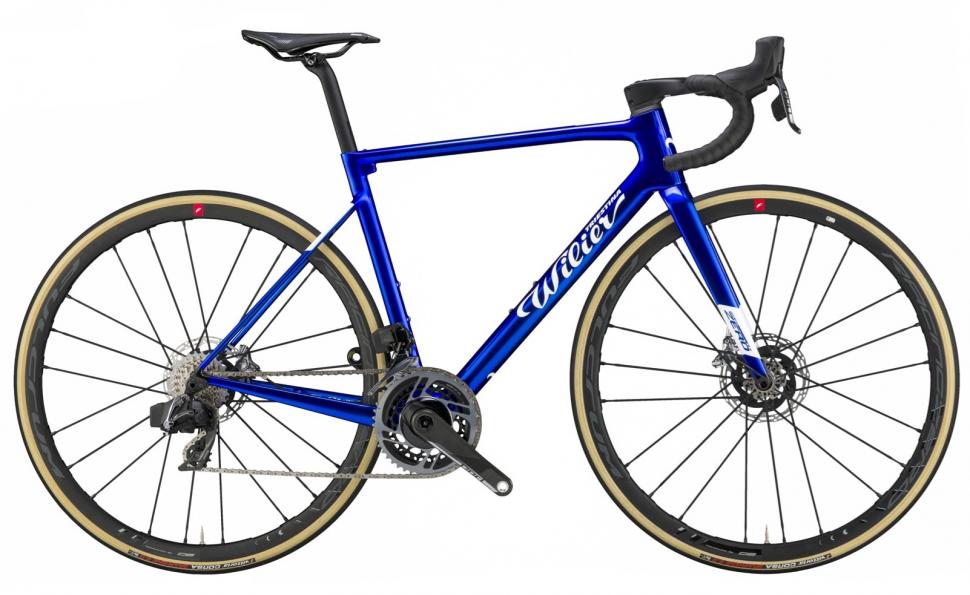 Wilier Zero SLR 2019 - 1 (2).jpg
Wilier Zero SLR 2019 - 1 (2).jpgWilier launches Zero SLR: superlight disc brake bike with fully integrated cables
Wilier has revealed its new Zero SLR which it says is the first superlight road racing bike with disc brakes and fully integrated cables.
Seeing as Wilier is making such a big deal of the weight, let's give you that info right away: the medium version of the frame, in a matt black finish with white graphics, has a claimed weight of 780g (+/-5%). The fork, again in a black/white finish, has a claimed weight of 340g (+/-5%). The complete XL bike we weighed, with a Shimano Dura-Ace Di2 groupset and non-standard Mavic wheels, was a whisker over 6.8kg (including pedals).
Wilier reckons that the Zero SLR's stiffness-to-weight ratio is significantly greater than that of any bike it has previously released. A large part of that is said to be down to the fibres used in the frame's construction.
"For the Zero SLR we selected the highest quality fibres, calling the blend HUS-Mod: this composition is qualitatively superior to any previous type of material [we have] used," says Wilier.
"In addition to the HUS-Mod carbon, we also included a highly resistant multi-directional fibre mesh to increase rigidity in every direction and liquid crystal polymer woven to improve impact resistance and vibration absorption.
Other brands already use liquid crystal polymer in their frames. Bianchi, for instance, uses Kevlar inserts in bike like the Intenso, and Time uses both Kevlar and Vectran.
Mention of the HUS-Mod carbon and liquid crystal polymer begs a lot of questions, but Wilier was cagey at the Zero SLR's press launch last month. The liquid crystal polymer is used in certain unspecified areas of the frame and fork rather than throughout, but that's all it was saying. Top secret information, we were told, that can't be shared for commercial reasons.
"The grade of liquid crystal polymer used in the construction of the Wilier Zero SLR was carefully chosen to give us the physical properties we need," said Wilier's product manager Claudio Salomoni, and he wouldn't be drawn any further!
Wilier's argument is that the proof of the pudding is in the eating and it gave us a few hours on board the new bike.
Wilier has used different main frame tube profiles for different frame sizes to maintain consistent rigidity, handling, quality and comfort across the range.
Any disc brake fork is asymmetric in that you get the brake mounts only on one side, but Wilier has also given the legs different cross sections.
"We reinforced the blade housing the brake calliper with a wider section than the other to ensure the fork is able to balance the asymmetrical forces generated by disc braking, while maintaining excellent handling even during braking," says Wilier.
"To improve aerodynamics, we increased the distance between the fork blades and the wheel, something we learned when developing our Wilier Turbine triathlon and time trial bikes. This reduces the turbulence generated by the wheel and the frame when in motion, and improves aerodynamic penetration."
Several other bikes have recently been given fork legs that are further apart for the same reason, the Storck Fascenario.3 being one example.
The rear triangle is also asymmetric, although rather than being designed to counteract braking forces, the idea here is to prevent lateral movement caused by the drivetrain.
Like the fork, the frame is compatible with tyres up to 28mm wide (although 25mm tyres are specced by Wilier) and both use thru axles to hold the wheels in place – 100mm at the front and 142mm at the rear.
Wilier uses Mavic's Speed Release thru axle system that allows the wheel to be removed quickly. Wilier says that it chose Speed Release to save weight (a claimed 85g per pair) and to safeguard the integrity of the frame. When you tighten the wheel in place, the integrated control system prevents excess torque that could strip the thread. Once you reach the required torque, the lever 'jumps', a bit like many torque wrenches, and doesn't allow you to tighten any further.
The Zero SLR uses a proprietary carbon monocoque seatpost with a D-shaped cross section: it has a rounded leading edge while the rear is squared off. It is 26mm wide and 29mm deep. Wilier says that it's more aerodynamically efficient than a round post but it isn't designed to be ultra-aero. The seatpost is available either with an inline clamp or with 15mm of setback; there's no 25mm setback version, an option that is common elsewhere.
The seatpost is held in place by a wedge-type expander that's tightened by a bolt you access via a hole in the top tube.
The lack of an external clamp fits well with the Zero SLR's clean aesthetic although you might feel that the step at the top tube/ seat tube junction that accommodates the expander jars slightly.
Aside from the frameset, one of the Zero SLR's key features is its integrated carbon handlebar/stem (a claimed 330g for the version in a 42cm width with a 100mm stem section) which takes the brake hoses and shift cables internally. These then run down into the frame via two-part composite spacers that lock together in use. This design allows you to add or remove spacers to adjust handlebar height without the need to disconnect the hoses or cables. We've seen similar on bikes like Trek's Madone, for example.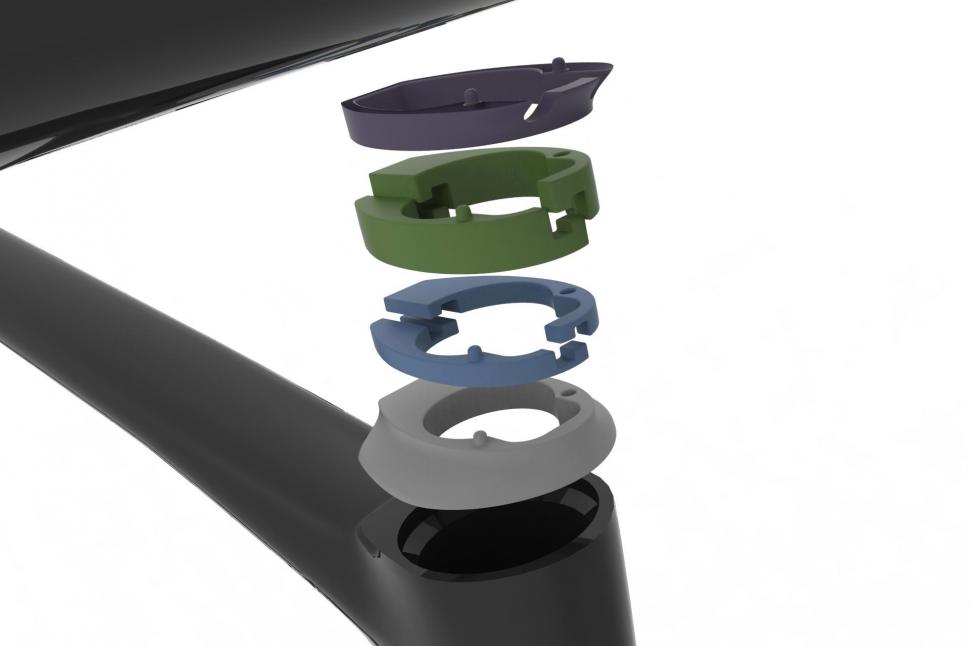
The handlebar cross section isn't round and it's not designed to be aerodynamic either – it sits somewhere in between. Wilier reckons it's an ergonomic shape.
As mentioned up top, Wilier says that the Zero SLR has a frame weight of just 780g. This compares with 799g for its Zero.7 and 680g for its Zero.6. Wilier claims that the Zero SLR is stiffer than either of those two models, and that its stiffness to weight is considerably higher.
"On the Zero SLR, thanks to the blend of carbons, the unique positioning of the fibres and the construction technology, we have succeeded in attaining the highest level of both lightness and stiffness, exceeding the strength to weight value of our previous Zero.7 and Zero.6 models by 24%," says Wilier.
Check out our first ride impressions of the Wilier Zero SLR
As well as these lightweight road bikes, Wilier already has aero bikes like the Cento10Pro in its range.
"There is always a demand for lightweight bikes, whether it's aero or not," said Claudio Salomoni. "That's more challenging now because of the success of disc brakes that increase the overall weight of bikes.
"The pros want a UCI-limit-weight bike – 100%. Any bike they use must ideally be 6.8kg [the UCI's minimum weight limit for racing]. For sure, we understand that they prefer the speed of aero bike for flat courses, and a few extra grams is not a huge problem, but they absolutely want the responsiveness and UCI weight limit of a climbing machine.
"We have already designed a Wilier Zero SLR with rim brakes, and started a pre-production version for our internal tests, but it looks like today's customer wants to buy disc brakes so there will probably be no market for the rim version.
"From the pro's point of view, a rim brake version would be below the 6.8kg limit, so 'artificial' weight would have to be added to the bike."
Builds and prices
The Wilier Zero SLR is available in 12 different builds, all of them with either Shimano Dura-Ace/ Ultegra Di2 electronic shifting or SRAM Red/ Force eTap AXS wireless shifting; this bike isn't designed for cable-operated shifting. All models use hydraulic disc brakes.
Here are details of the various builds with prices in Euros (prices in UK pounds have yet to be announced):
• Shimano Dura-Ace Di2, Wilier ULT38KT Carbon wheels (tubular tyres) €11,100
• SRAM Red eTap AXS, Wilier ULT38KT Carbon wheels (tubular tyres) €11,200
• Shimano Dura-Ace Di2, Fulcrum Racing Zero Carbon wheels €11,100
• SRAM Red eTap AXS, Fulcrum Racing Zero Carbon wheels €11,200
• Shimano Dura-Ace Di2, Fulcrum Racing Zero Aluminium wheels €10,000
• Shimano Dura-Ace Di2, Wilier NDR38KC Carbon wheels €9,700
• SRAM Red eTap AXS, Fulcrum Racing Zero Aluminium wheels €10,100
• SRAM Red eTap AXS, Wilier NDR38KC Carbon wheels €9,800
• Shimano Ultegra Di2, Fulcrum Racing Zero Aluminium wheels €8,000
• Shimano Ultegra Di2, Wilier NDR38KC Carbon wheels €7,700
• SRAM Force eTap AXS, Fulcrum Racing Zero Aluminium wheels €8,000
• SRAM Force eTap AXS, Wilier NDR38KC Carbon wheels €7,700
The Wilier wheels mentioned above have been developed in association with Miche.
Find out more about the Wilier wheels here
For more info on the Zero SLR go to www.wilier.com/global/zero-slr.
Mat has been in cycling media since 1996, on titles including BikeRadar, Total Bike, Total Mountain Bike, What Mountain Bike and Mountain Biking UK, and he has been editor of 220 Triathlon and Cycling Plus. Mat has been road.cc technical editor for over a decade, testing bikes, fettling the latest kit, and trying out the most up-to-the-minute clothing. He has won his category in Ironman UK 70.3 and finished on the podium in both marathons he has run. Mat is a Cambridge graduate who did a post-grad in magazine journalism, and he is a winner of the Cycling Media Award for Specialist Online Writer. Now over 50, he's riding road and gravel bikes most days for fun and fitness rather than training for competitions.
Latest Comments
- Steve K 31 min 12 sec ago
A very good family friend had worked at the Department of Transport. He told me when I had that car, that they'd done a study at one stage about...
- chrisonabike 48 min 40 sec ago
And the next time - plead sympathy for your addiction, caused by trauma from your previous "accident"...
- wtjs 51 min 55 sec ago
Butyric Acid... was the most disgusting thing I have ever smelt in the lab...
- ubercurmudgeon 1 hour 22 min ago
Even a stopped clock, etc, etc...
- Bigtwin 2 hours 43 min ago
I wouldn't be meeting that Orange Pillock anywhere, let alone 1/2 way.
- Laz 2 hours 59 min ago
If the local police is unwilling or unable to do their job properly, then perhaps her insurance provider ought to re-evaluate the risks she poses...
- Martin1857 13 hours 53 min ago
As a member of the Co-op community (I live in a Housing Co-op) and a bike owner /rider, this is very sad news. We need more Co-ops not less.
- Dnnnnnn 13 hours 44 min ago
It is sad for the individuals concerned but (and this is a general point, rather than specific to this story), we're much better off overall for...
- David9694 14 hours 40 min ago
Lorry carrying 25 tonnes of beer catches fire on the M11...
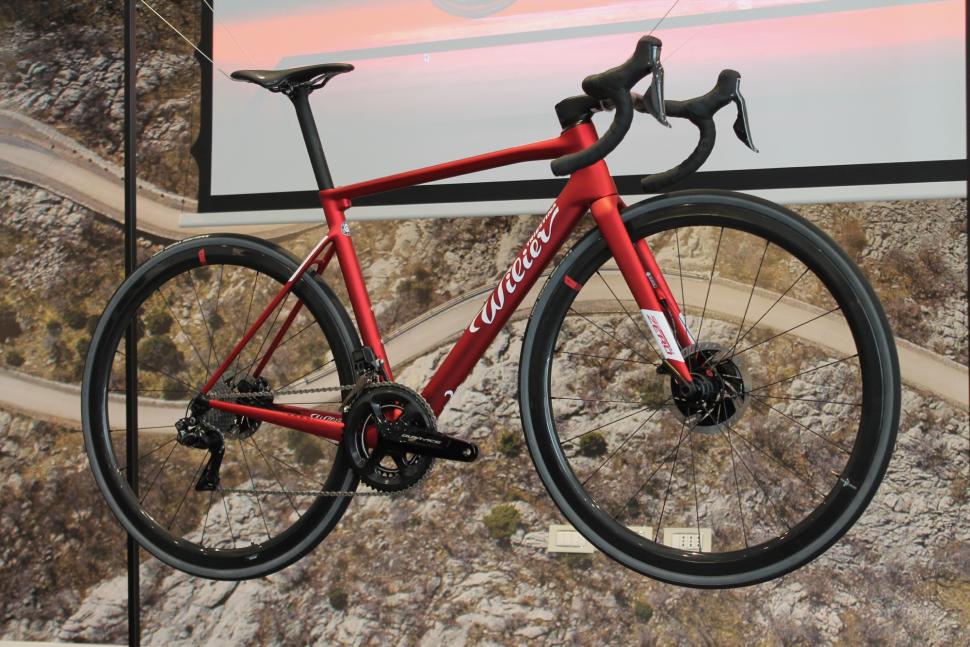
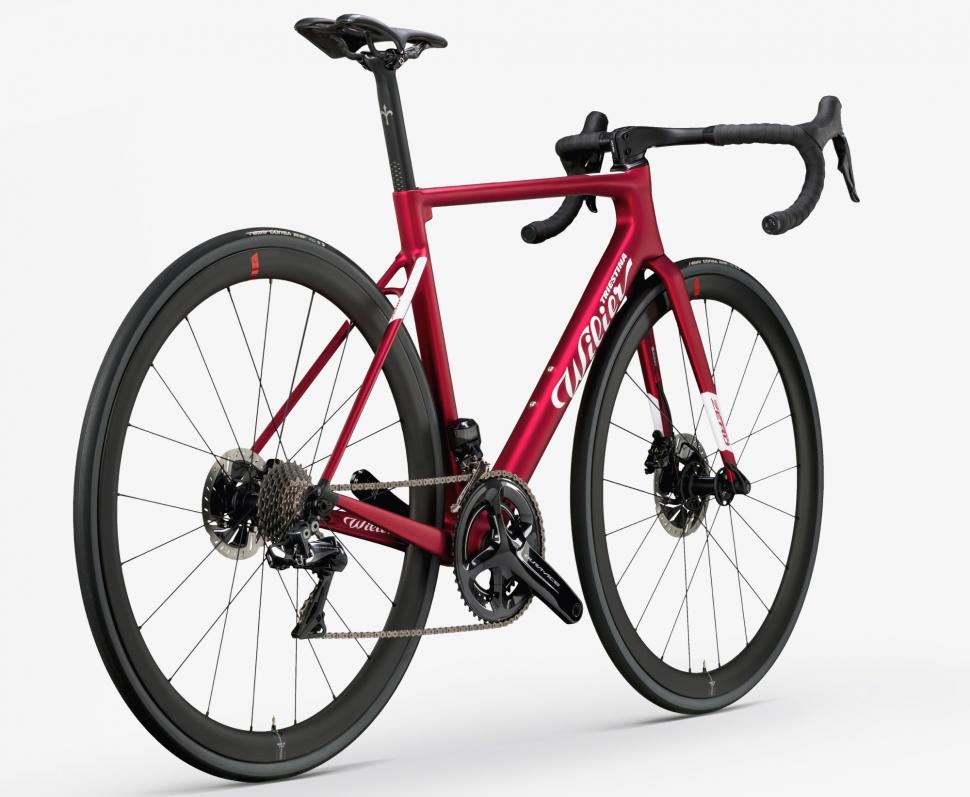

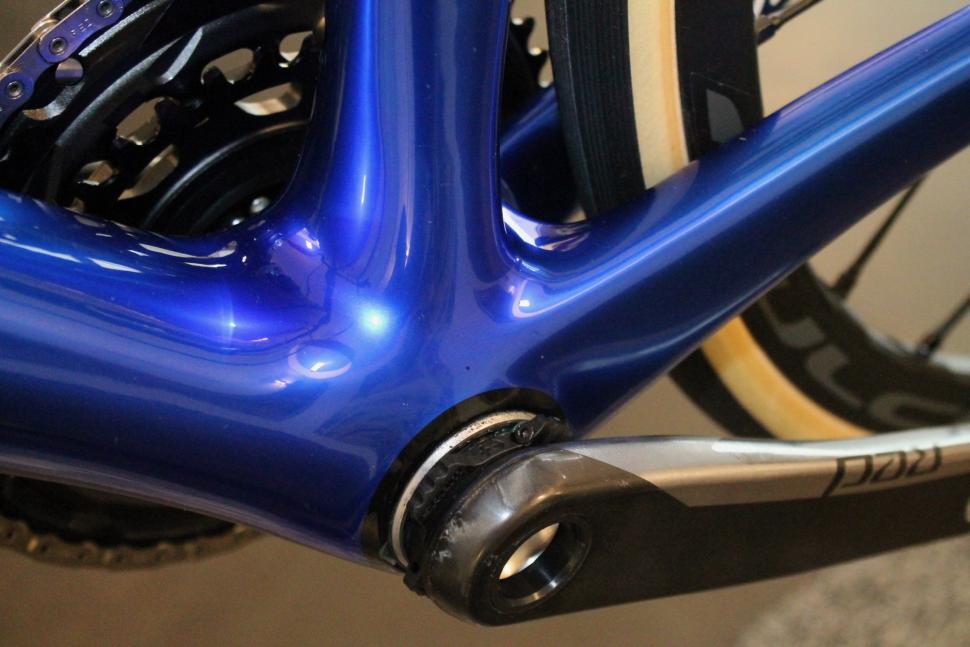
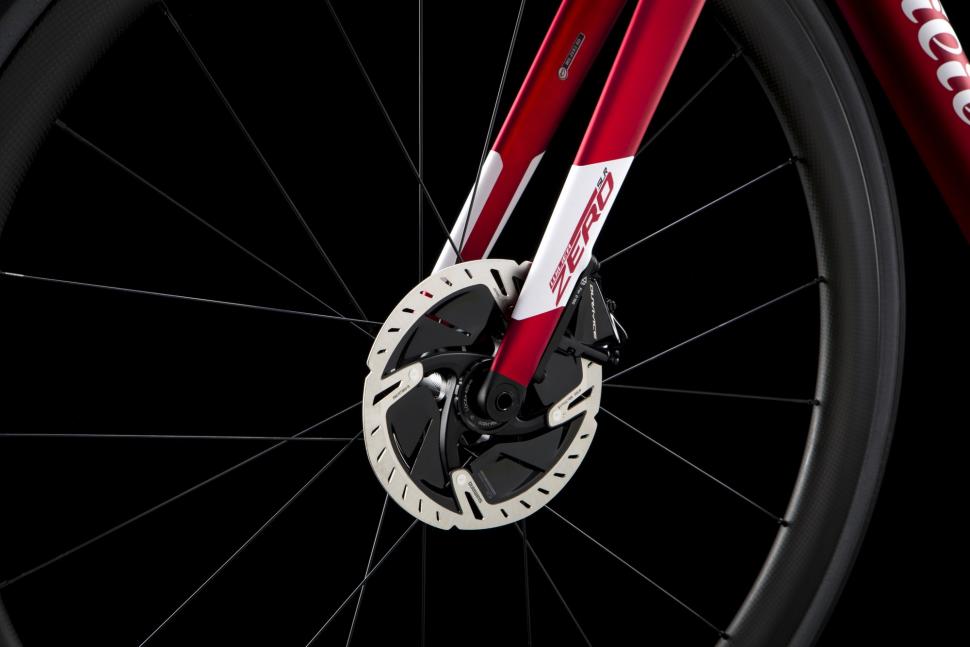




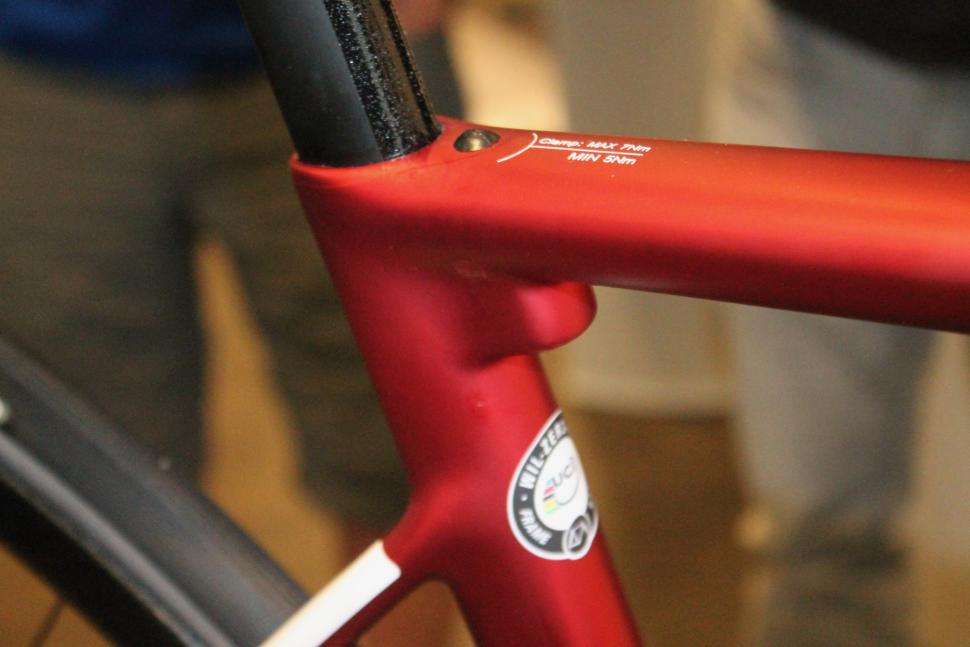

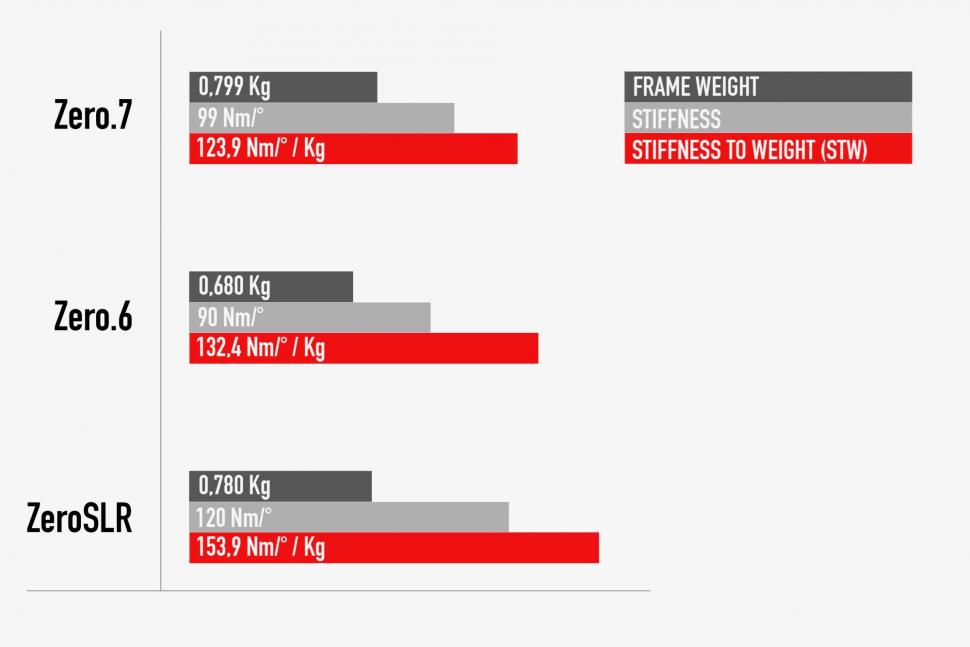


Add new comment
7 comments
The shame is there's no Campag versions...
Why not just a standard seatpost clamp. That chunk underneath spoils the whole frame and looks like an after thought.
Ooh, yes, that it quite, quite lovely.
Clean lines, no horrendous graphics or text.
The blue, yes I think so.
No, the red one.
No! Too hard to decide....
Way too much though...... I'm waiting for the updated Canyon Ultimate and I can't really afford one of those....
Very very hot. It’s about time nice Italian brands caught up with the fully integrated look.
Apparently there's no provision in the frame for cable shifting, just electronic, so cables should need changed rarely at best.
The lack of external brake hoses make for a very clean look.
I bet it's a proper pain to change them, but it is a nice look.
As a Wilier customer I love the look of this bike. However it is a lot of money and its about time (all) bike companies listed the actual weight of what is deemed a superlight bike.
You would'nt buy a car without knowing its insurance group or MPG etc, so why is a £10,000 bike any different? Time to be brave!